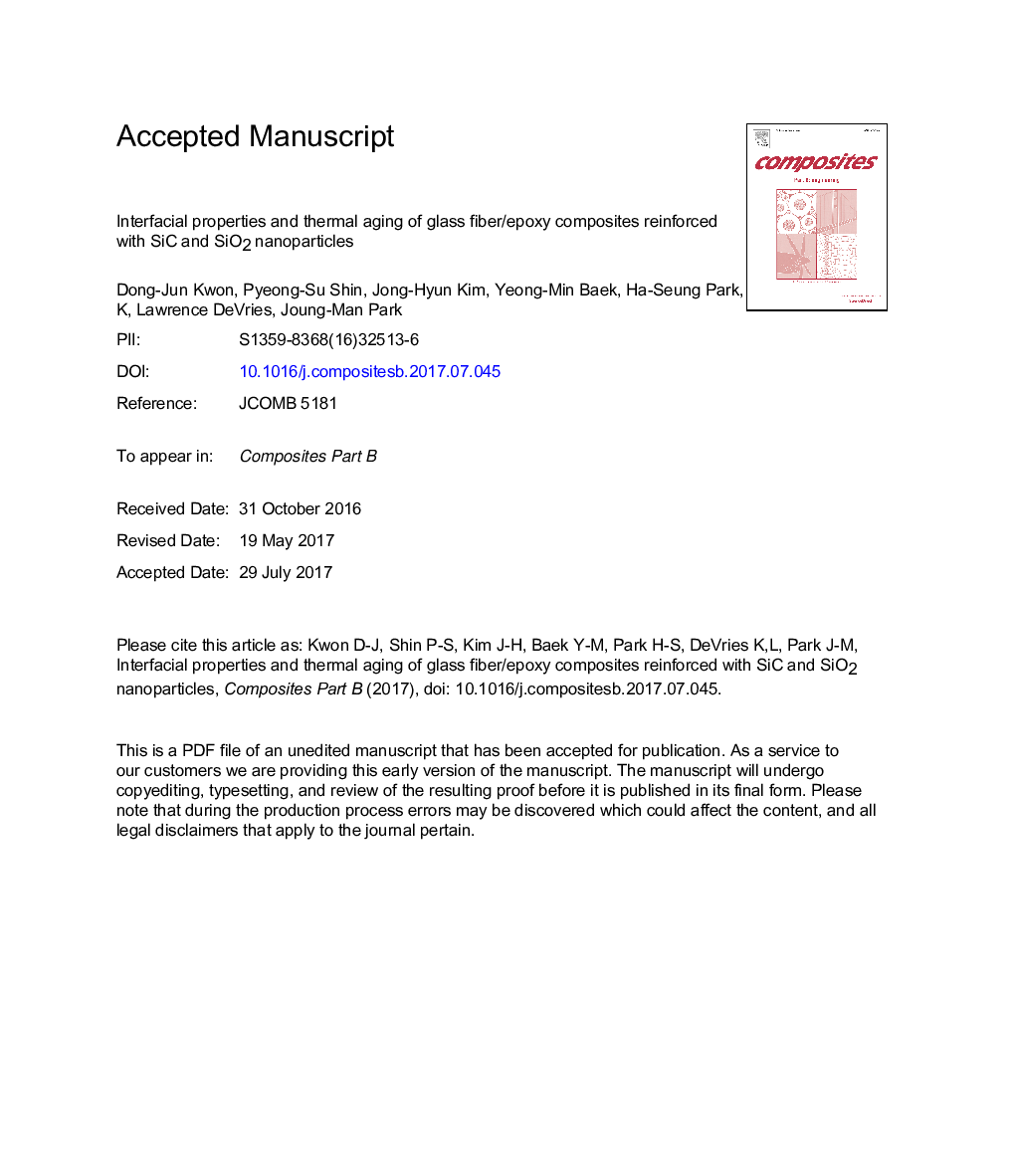| Article ID | Journal | Published Year | Pages | File Type |
|---|---|---|---|---|
| 5021106 | Composites Part B: Engineering | 2017 | 29 Pages |
Abstract
The thermal resistance of glass fiber reinforced composites (GFRC) is often required for optimum performance. In the research reported in this paper two Si-type nanoparticles (SiC and SiO2) added to GFRC were investigated. It was found that tensile and compressive strength of epoxy matrix composites changed with thermal aging. Differential scanning calorimetry (DSC) analysis disclosed that the epoxy-SiC composite had better thermal resistance than epoxy-SiO2. Microdroplet pull-out and short beam tests were used to determine interfacial shear strength (IFSS) and interlaminar shear strength (ILSS) between the epoxy matrix with the different Si nanoparticles and glass fibers. The reinforcing effects, the thermal resistance and the interfacial properties of the glass fiber/epoxy composites differed for the two types of Si nanoparticles, which was attributed to differences in their bonding. The addition of SiC nanoparticles produced the more thermal resistant composites, which is thought to be due to it inducing strong covalent bonding due to the “dangling bond effect” while SiO2 induces rather weak hydrogen bonding by means of its oxygen. The SiC nanocomposites induced not only better thermal resistance but also better mechanical reinforcement.
Keywords
Related Topics
Physical Sciences and Engineering
Engineering
Engineering (General)
Authors
Dong-Jun Kwon, Pyeong-Su Shin, Jong-Hyun Kim, Yeong-Min Baek, Ha-Seung Park, K. Lawrence DeVries, Joung-Man Park,
